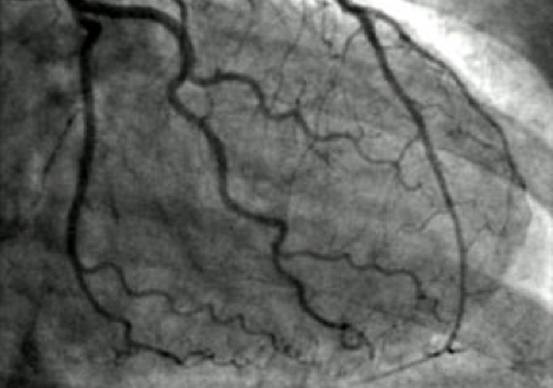What is it?
A Coronary Angiogram or ‘angio’ is a special x-ray of the heart’s arteries in order to show if they are narrowed or blocked.
For any patient enquiries please speak to your specialist or contact MCDC by calling us on (03) 9802 9250.

Procedure Information
What to bring
- Medicare card, private health fund cards and any other concession cards
- All current medication in its original packaging
- * For all procedures requiring overnight stays, please ensure you bring with you night attire, including dressing gown, non-slip slippers and toiletries.
Pre-procedure
-
You will be required to fast for 6 hours prior to procedure
-
Continue to take all of your prescribed medications unless instructed by your Cardiologist otherwise
Procedure
- Coronary angiography is performed in a special ‘Cath-labs’, which are usually undertaken in the Monash Medical Centre, Jessie McPherson or Valley Private Hospital
- Lying on a narrow table, you will be moved from side to side during testing
- An intravenous line may be inserted to enable medicines to be given during testing
- Local anaesthetic is injected into the point where the catheter is introduced, typically in the wrist, groin or arm.
- The Catheter moves through the aorta to the coronary arteries in the heart
- With the catheter in place, contrast dye is injected and x-rays taken, as the dye moves through the coronary arteries.*
- Relevant catheters will be replace to study various arteries.
- Upon completion of procedure, the catheter will be removed and you will be transferred to the ward or recovery area
- A standard procedure coronary angiogram takes roughly about 30-40 minutes. In most circumstances you will be discharged between four to six hours after procedure.
- * Some symptoms of injecting dye include nausea or chest discomfort. These symptoms are common and subside quickly.
- ^ In time, x-ray dye passes through the kidneys and is excreted in your urine.
Results
Your specialist will advise on results at time of procedure.
Discharge
Patients undergoing this procedure may be required to stay overnight with discharge being the following day.
* It is important to discuss with your Cardiologist instructions for dressing removal and wound care. Once the dressing(s) has been removed it will require little care. Keep clean and dry and avoid using powder. Check wound daily and report any possible signs of infection to your Cardiologist promptly.
- Your cardiologist will discuss a time for a follow up appointment (usually within a week or two)
- You will be discharged with the appropriate medications
- ^ Please discuss any limitations or restrictions directly following your procedure and any medication changes with your Cardiologist
Depending on your procedure, time and recovery you will be discharged the same day or early the next morning provided you’re accompanied by an consenting adult. Your cardiologist will arrange a follow up appointment prior to discharge.
For 24 hours following procedure, it is recommended you do not;
- Drive a vehicle
- Travel on public transport
- Drink Alcohol
- Sign important documents
- Use heavy machinery
Risks
Although serious problems are rare, as with any medical procedure there are always some risks involved. Every effort is made to minimise your risk, though should complications arising from you procedure occur, emergency equipment is readily available.
Exact risks vary from patient to patient, however, some symptoms that may occur include;
Haematoma (Bruising and swelling)
It is usual for most patients to have bruising and tenderness at and around the catheters insertion point for a few days following procedure.
Infection
Infection is rare, however if infection does occur it is usually contained to the area of skin overlying the catheter insertion point. Any infection will be treated with the appropriate antibiotic.
Allergic reaction to dye
A dye, or ‘Contrast’ is used to enable the coronary arteries to be seen using x-ray. Minor reactions can result in hives and rare occasions where a dramatic fall in blood pressure is evident, shock. Risk to patients with no previous reaction to contrast dyes extremely low. Inform your Cardiologist if you have had any previous reaction to contrast mediums.
Acute Closure or rupture of coronary artery
In rare cases, coronary angioplasty can cause the artery to become completely blocked or rupture. In this situation an emergency coronary artery bypass operation would be performed.
Heart Attack
In extreme cases, patients may endure cardiac arrest during this procedure. Rest assured your Cardiologist is well prepared to deal with this situation.
